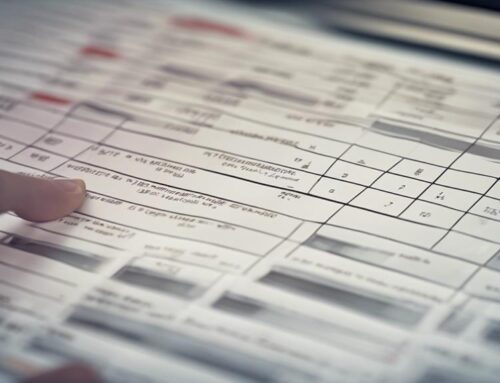Master efficiency in appraisal data collection with these 7 key tips: Calibrate equipment for accuracy, use digital mapping tools for precision, update records in real-time, optimize camera settings for quality photos, organize documents efficiently, ensure precise sketches, and utilize comparable sales and neighborhood insights for accuracy. Enhance your valuation process by implementing these strategies for reliable property assessments and informed decision-making. Elevate your skills in appraisal data collection to boost your efficiency and expertise in the field.
Field Data Collection
To streamline the process of field data collection, ensure that all necessary equipment is properly calibrated and ready for use. Before heading out, double-check that your devices are calibrated to collect accurate information. Utilizing digital mapping tools can significantly enhance your efficiency. These tools allow you to pinpoint exact locations and collect data seamlessly. Additionally, real-time updates are crucial for maintaining accurate records. Make sure your systems are set up to provide instant updates so that you can access the most current information while in the field.
Efficiency in field data collection is paramount for a successful appraisal process. By incorporating digital mapping and real-time updates into your workflow, you can streamline the data collection process and ensure accuracy. Being prepared with calibrated equipment and utilizing modern technology will not only save you time but also improve the overall quality of your data. Stay focused on these key aspects to enhance your field data collection practices.
Efficient Photo Documentation
For efficient photo documentation in the appraisal process, ensure your camera settings are optimized for high-quality images. Image quality is paramount when capturing property details. To achieve this, adjust your camera settings to the highest resolution possible and make sure the lens is clean to avoid any distortions in the images.
- Utilize Mobile Apps: Take advantage of mobile applications specifically designed for property appraisal. These apps often offer features that can enhance image quality and streamline the documentation process.
- Consider Lighting Conditions: Pay attention to the lighting when taking photos. Natural light is usually best, but if that’s not possible, use artificial lighting to ensure clarity in your images.
- Maintain Consistency: When documenting different areas of a property, maintain consistency in your photo composition. This helps in creating a cohesive and organized documentation of the appraisal process.
Organizing Important Documents
Ensure your appraisal process runs smoothly by implementing a systematic approach to organizing important documents. Document organization is crucial for efficient data management during the appraisal process. Start by categorizing documents based on their type, such as property records, inspection reports, or legal documents. Utilize digital tools like folders on your computer or cloud storage to keep electronic copies organized and easily accessible.
Create a standardized naming convention for your documents to facilitate quick searches and retrieval. For physical documents, consider using color-coded folders or labels to quickly identify different categories. Regularly update and maintain your document organization system to ensure all information is current and accurate.
Establish a clear process for collecting, storing, and updating important documents to streamline your data management efforts. By maintaining a well-organized document system, you can enhance the efficiency and accuracy of your overall appraisal data collection process.
Accurate Sketches and Drawings
When creating accurate sketches and drawings for your appraisal process, attention to detail is paramount. Detailed illustrations and precise diagrams are essential components in accurately representing the property being appraised. To ensure the effectiveness of your sketches and drawings, consider the following:
- Precision Matters: Each line and measurement in your sketches should be meticulously drawn to scale, leaving no room for ambiguity.
- Clarity is Key: Make sure your drawings are clear and easy to understand, as they serve as visual aids for the appraisal process.
- Accuracy is Non-Negotiable: Double-check all dimensions and details in your sketches to avoid any errors that could impact the appraisal outcome.
Precise Measurement Techniques
To enhance the accuracy of your appraisal data collection, mastering precise measurement techniques is fundamental. Measurement accuracy plays a crucial role in ensuring the validity of the data you gather for property appraisals. Utilizing precise measurement tools such as laser distance meters or digital floor plan software can significantly enhance your efficiency in capturing accurate measurements. When measuring dimensions, it is essential to double-check your readings to minimize errors and ensure data validation. Consistency in measurement techniques is key to maintaining accuracy throughout the appraisal process.
To improve measurement accuracy, consider creating a standardized measurement protocol that outlines the specific tools and methods to be used. This protocol can help streamline the data collection process and reduce the likelihood of discrepancies. Additionally, incorporating quality control measures, such as conducting regular audits of your measurement data, can further enhance the reliability of your appraisal data. By prioritizing precise measurement techniques and data validation practices, you can elevate the quality and credibility of your property appraisals.
Utilizing Comparable Sales Data
Achieving a thorough understanding of the market requires effectively utilizing comparable sales data in your property appraisals. When it comes to market analysis and pricing strategies, the use of comparable sales data is crucial for accurate property valuations. Here are three key tips to maximize the potential of comparable sales data:
- Selecting Recent Sales: Focus on recent sales within the same neighborhood or similar area to ensure that the data accurately reflects the current market conditions. This will provide a more precise picture of the property’s value.
- Considering Property Features: Take into account the specific features of both the subject property and the comparable sales. Factors such as square footage, number of bedrooms, location, and amenities can significantly impact the property’s value.
- Adjusting for Discrepancies: Make necessary adjustments to the comparable sales data to account for any differences between the properties. This will help in creating a more accurate comparison and determining a fair market value.
Gathering Neighborhood Insights
Maximizing your appraisal’s accuracy involves delving into neighborhood insights to enhance your understanding of the property’s valuation. Analyzing local demographics is crucial in comprehending the target market for the property. Factors such as population density, age distribution, and income levels can significantly impact the property’s desirability and market value. By understanding who resides in the neighborhood, you can tailor your appraisal to align with potential buyers’ preferences and financial capabilities.
In addition to demographics, evaluating nearby amenities is essential for assessing the property’s appeal. Consider the proximity to schools, parks, shopping centers, and public transportation. Properties located near sought-after amenities often command higher prices due to increased convenience and quality of life. Conversely, properties in areas lacking essential amenities may face challenges in attracting buyers or maintaining value over time. By thoroughly examining the neighborhood’s amenities, you can provide a more accurate appraisal that reflects the property’s true market value.
Frequently Asked Questions
What Are Some Common Challenges Appraisers Face During Field Data Collection?
Navigating obstacles during field data collection challenges appraisers. Streamlining workflows, utilizing technology for real-time updates, and enhancing communication with property owners are key solutions. Overcoming these hurdles ensures efficient appraisal data collection.
How Can Appraisers Ensure the Accuracy and Reliability of Their Photo Documentation?
To enhance reliability in photo documentation, ensure consistent angles, lighting, and focus. Improve accuracy by verifying property features. Incorporate timestamps for reference. By following these steps, you can enhance quality and improve the appraisal process.
What Is the Best Way to Organize Important Documents Related to the Appraisal Process?
To keep your appraisal process running smoothly, create a digital filing system for easy access to important documents. Efficient data collection and record keeping rely on organized document organization and meticulous data management practices.
How Can Appraisers Improve Their Accuracy When Creating Sketches and Drawings of the Property?
To enhance accuracy in sketches, focus on clear measurements and proportions. Practice using tools like laser distance meters. Implement grid methods for precise scaling. Regularly review and refine your sketching techniques for improved appraisal outcomes.
What Are Some Advanced Measurement Techniques That Appraisers Can Use to Ensure Precise Measurements During an Appraisal?
To ensure precise measurements during an appraisal, consider utilizing laser technology or survey equipment for accurate data collection. Digital tools and mobile apps can also enhance efficiency in capturing property dimensions. Master these advanced techniques for optimal results.




